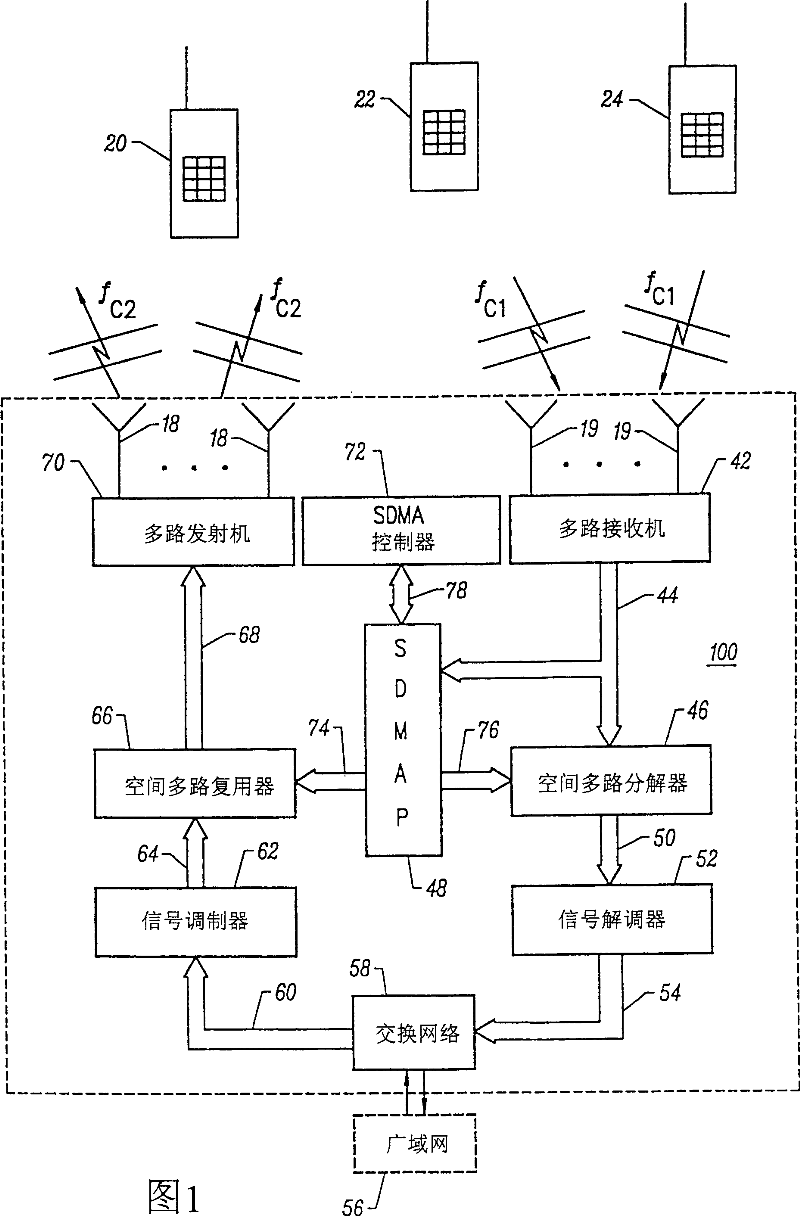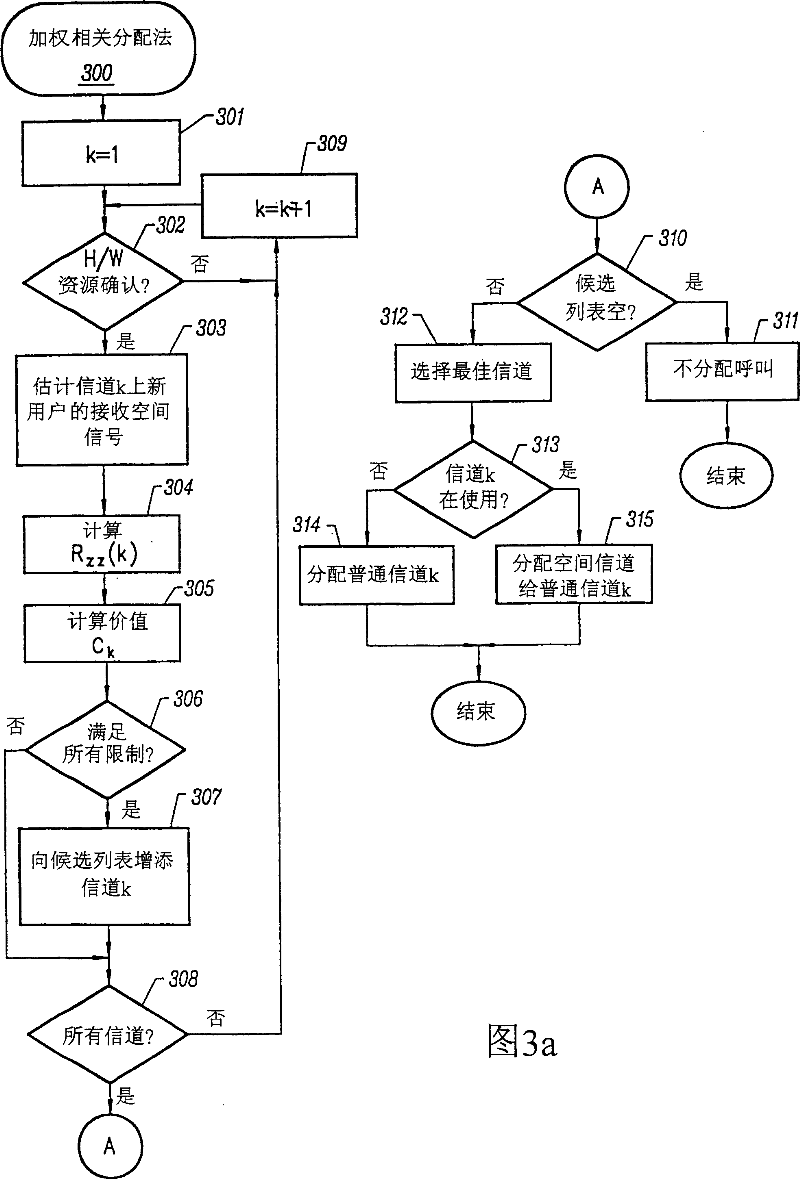Channel assignment and call admission control for spatial division multiple access communication systems
A space channel and channel allocation technology, applied in the direction of diversity/multi-antenna system, communication between multiple stations, transmission control/equalization, etc., can solve the problem that the channel cannot be used by two users
- Summary
- Abstract
- Description
- Claims
- Application Information
AI Technical Summary
Problems solved by technology
Method used
Image
Examples
Embodiment Construction
[0037] Channel allocation in full-duplex channels includes selection of uplink (from user to cell site) and downlink (from cell site to user). The case of half-duplex channel allocation can be viewed as a special case of the full-duplex problem. The interference on the uplink channel is mainly from other subscriber stations, while the interference on the downlink channel is mainly caused by the base stations of other cells. Therefore, the quality of communication on the uplink and downlink is generally different. In one embodiment of the invention, since there is no restriction in selecting uplink and downlink channels, uplink and downlink channel assignments are performed independently, respectively, offering the potential to achieve the highest system capacity. However, many practical systems impose a fixed relationship between uplink and downlink channels, so independent selection is not possible.
[0038] For example, in the Personal Handset System (PHS) standard (Associ...
PUM
 Login to View More
Login to View More Abstract
Description
Claims
Application Information
 Login to View More
Login to View More - R&D
- Intellectual Property
- Life Sciences
- Materials
- Tech Scout
- Unparalleled Data Quality
- Higher Quality Content
- 60% Fewer Hallucinations
Browse by: Latest US Patents, China's latest patents, Technical Efficacy Thesaurus, Application Domain, Technology Topic, Popular Technical Reports.
© 2025 PatSnap. All rights reserved.Legal|Privacy policy|Modern Slavery Act Transparency Statement|Sitemap|About US| Contact US: help@patsnap.com



